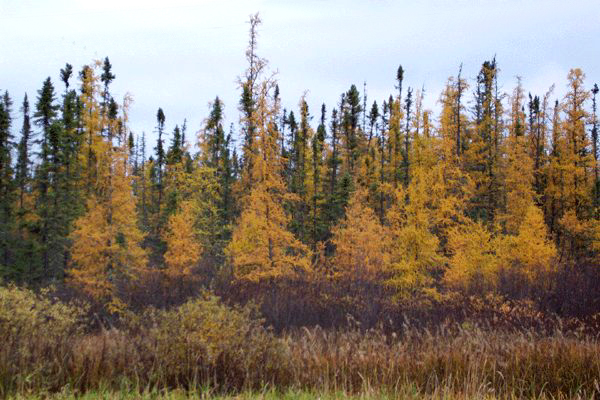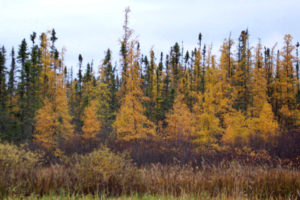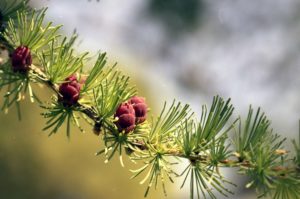
At a glance
Names
Latin (scientific) name: Larix laricina
Common English name: Tamarack
Other names: Hackmatack, Eastern Larch, American Larch, Alaska Larch, Juniper
French name: Mélèze laricin
Type

Deciduous-Conifer
Plant Hardiness Zone
0a, 0b, 1a, 1b, 2a, 2b, 3a, 3b, 4a, 4b, 5a, 5b, 6a, 6b, 7a, 7b, 8a, 8b, 9a, 9b
Status

Native
Size at Maturity
25 m
Life Expectancy
Where it grows
Plant Hardiness Zone
0a, 0b, 1a, 1b, 2a, 2b, 3a, 3b, 4a, 4b, 5a, 5b, 6a, 6b, 7a, 7b, 8a, 8b, 9a, 9b
Habitat
Found mixed with Black Spruce and Eastern White Cedar.
Preferred Soil Type
Cold, wet, poorly drained sites.
Distribution Across Canada
What it looks like
At Maturity

Medium sized tree, triangular outline, narrow straight trunk.
Bark

Greyish, becomes scaly with age.
Leaf

Flattened, in bunches of approximately 40, about 3 cm long, bluish, turning yellow in autumn and falling off.
Bud

Cone

Small ovoid cones face up, 2 cm long
Other

One of the few “deciduous” coniferous trees. Leaves turn a brilliant yellow and fall off in the winter. Th official arboreal emblem of the Northwest Territories. Also considered a hard-soft wood, can be used for hardwood flooring.
What affects it
Pests
Larch case-bearer, sawfly.
Common diseases
Wood rot and several rust fungi.
Values and Uses
Edible fruit/nut tree?
No
Follow us on social media to keep up-to-date.
